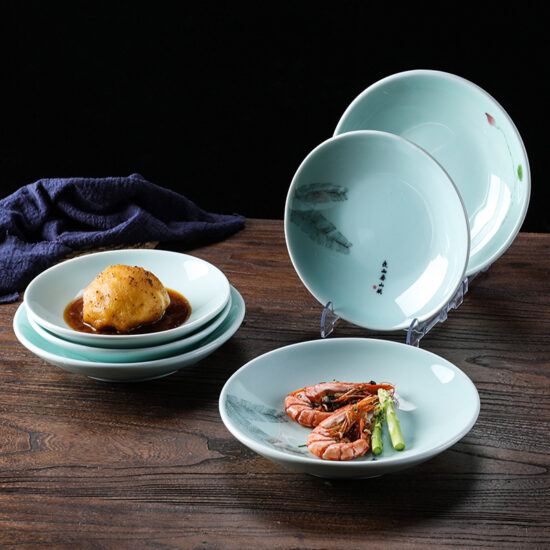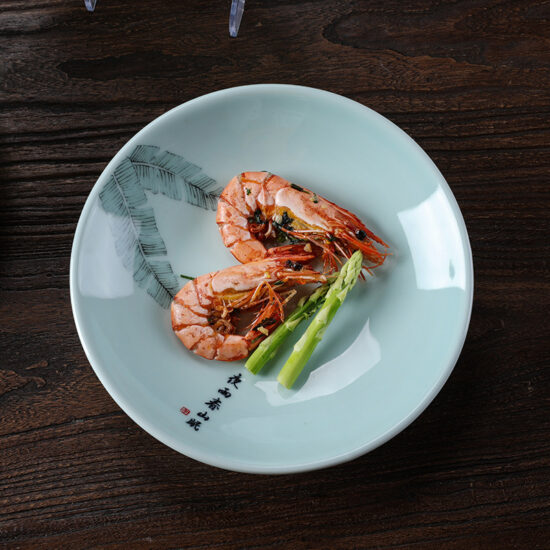bob@nbdho.com
Are Ceramic Plates Heat-Resistant and Microwave Safe? Everything You Need to Know
Heat Resistance and Microwave Compatibility of Ceramic Plates
Introduction
Ceramic plates are a popular choice for both home and commercial use, known for their elegant appearance and durability. However, one common question arises: Are ceramic plates heat-resistant and microwave-safe? The answer largely depends on how the ceramic is made, fired, and finished. In this article, we explore the science behind ceramic heat resistance and how to determine if your plates are safe for use in a microwave or high-temperature setting.
1. What Makes Ceramic Plates Heat Resistant?
Ceramic plates are made from clay materials that undergo high-temperature firing, typically between 1200°C to 1350°C (2192°F to 2462°F). This firing process causes vitrification—turning the ceramic body into a dense, hard, and heat-resistant material.
Factors that contribute to heat resistance:
-
Material composition: Porcelain and stoneware have higher heat resistance than earthenware.
-
Firing temperature: The higher the firing temperature, the better the thermal stability.
-
Thickness and design: Uniform thickness helps distribute heat evenly and reduces cracking risks.
✅ Most high-fired ceramic plates are safe for use in ovens, microwaves, and dishwashers—if properly manufactured.
2. Are Ceramic Plates Microwave Safe?
In general, ceramic plates are microwave-safe, but with a few caveats:
✅ Microwave-Safe Conditions:
-
No metallic decorations (like gold or silver rims)
-
Fully vitrified (non-porous)
-
Lead-free and food-safe glaze
-
Free of surface cracks or defects
⚠️ Use Caution If:
-
The ceramic has visible crazing (fine cracks in the glaze)
-
The plate heats up excessively in the microwave (indicating poor insulation)
-
There are any labels indicating “not microwave safe”
To test: Place the ceramic plate in the microwave with a cup of water for 1 minute. If the plate stays cool, it’s safe. If the plate gets hot, it’s absorbing microwave energy and may not be safe.
3. Thermal Shock and Crack Prevention
Even heat-resistant ceramics can crack due to thermal shock—a rapid change in temperature.
Tips to Prevent Cracking:
-
Avoid putting cold plates into a hot oven or microwave
-
Do not rinse hot plates with cold water
-
Use thick, well-glazed ceramics for reheating
-
Let plates reach room temperature before reheating leftovers
4. Microwave vs. Oven Use
| Feature | Microwave Use | Oven Use |
|---|---|---|
| Ceramic Plates | ✅ Yes (check glaze) | ✅ Yes (high-fired) |
| Porcelain Plates | ✅ Yes | ✅ Yes |
| Earthenware Plates | ⚠️ Caution (low-fire) | ❌ Not recommended |
| Glazed with metal trim | ❌ No | ❌ No |
5. Manufacturer Labels Matter
Reputable ceramic plate manufacturers will provide clear product labeling regarding heat safety:
-
✅ “Microwave safe”
-
✅ “Oven safe up to 500°F (260°C)”
-
✅ “Dishwasher safe”
-
❌ “For decorative use only” – not heat-safe
At [Your Company Name], all ceramic plates are high-fired, lead-free, food-grade certified, and tested for microwave and dishwasher use.
Conclusion
Ceramic plates, when made with quality materials and fired at the correct temperatures, are both heat-resistant and microwave-safe. They are ideal for everyday dining, reheating food, and even serving oven-baked dishes. Just be sure to avoid sudden temperature changes and check for any metallic trims or glaze defects.
For wholesale, custom-branded, or restaurant-grade ceramic plates, choosing a reliable manufacturer ensures long-lasting, safe, and beautiful tableware.

